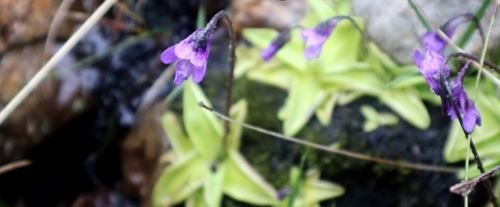Eden Wild Goose Nature
Nature notes from the Focus Magazine July 2022

Scottish sights
We recently set off for a holiday to the Isle of Skye, equipped with binoculars, telescope, and camera, anticipating watching out for otters, white tailed eagles, golden eagles and the odd Minke whale or maybe
a porpoise or dolphin or two.
Skies were scanned, horizons peered at, loch edges examined, mountains surveyed, and the result was – nothing. I’m sure the creatures were somewhere or other, but they didn’t seem to be where we were. Maybe the generally cloudy, windy, and wet weather didn’t help, maybe we didn’t look hard enough, who knows, but either way, nothing. I suppose that’s nature for you.
Anyway, one day we decided to visit a beach known for its Jurassic fossils- a safer bet when it comes to spotting, since fossils tend not to move so fast. The guidebook did warn the descent was precipitous, but nothing daunted, off we went. The guidebook was not kidding, and I became increasingly huffy as I negotiated my way down the cliff, wondering secretly if a Jurassic fossil was going to be worth the effort. Once at ground level we encountered another obstacle, a fast-flowing river with shaky stepping stones. By now I was definitely on the huffy side and stalked off upstream to see if I could find an easier crossing point. This involved a certain amount of scrambling around and clawing my way along the edge of a small rock face and while on hands and knees I noticed a rather unusual looking small flower which of course I photo-ed immediately for identification later. It turned out to be a Common Butterwort (not common to me) and widespread across Scotland and Northern England, frequenting boggy and marshy areas, and, for added interest, insectivorous. I wouldn’t have known any of this, except that it was highlighted on Gardeners World that Very Night. I Know! Strange or what, especially as normally I don’t watch GW.
So what? you might say, and I wouldn’t blame you. Well, I suppose the whole thing taught me bit of a nature lesson. You can go looking out for the Scottish Big Five and be disappointed, but nature is still all around us, albeit often more quietly and less spectacularly, and new sights and learning opportunities abound, even when you’re hot and bothered and out of sorts.
It might not have been as dramatic as a golden eagle, but I was quite pleased with my discovery, even though we never actually got to the beach - the final obstacle, a barbed wire fence, just seemed one too many to bother with. So, in the end, even the fossils eluded us.
Philippa Skinner
Common butterwort is an insectivorous plant.
Its bright yellow-green leaves excrete a sticky fluid that attracts unsuspecting insects; once trapped, the leaves slowly curl around their prey and digest it. The acidic bogs, fens and damp heaths that common butterwort lives in do not provide it with enough nutrients, so it has evolved this carnivorous way of life to supplement its diet.
It has purple flowers that appear from May to July. www.wildlifetrusts.org/wildlife-explorer/wildflowers/common-butterwort